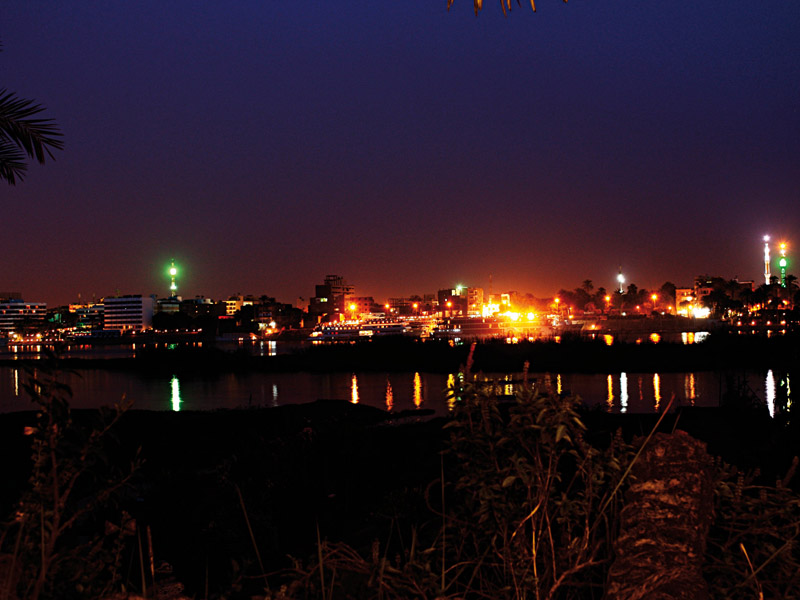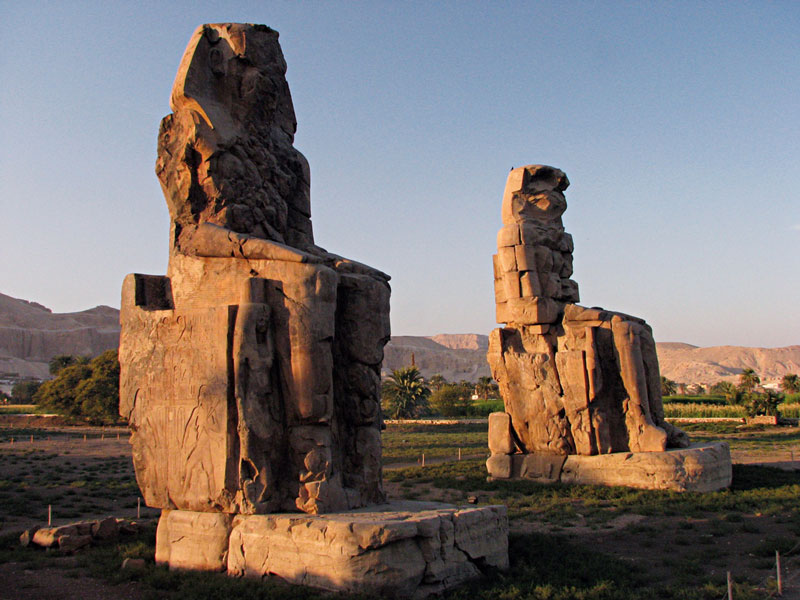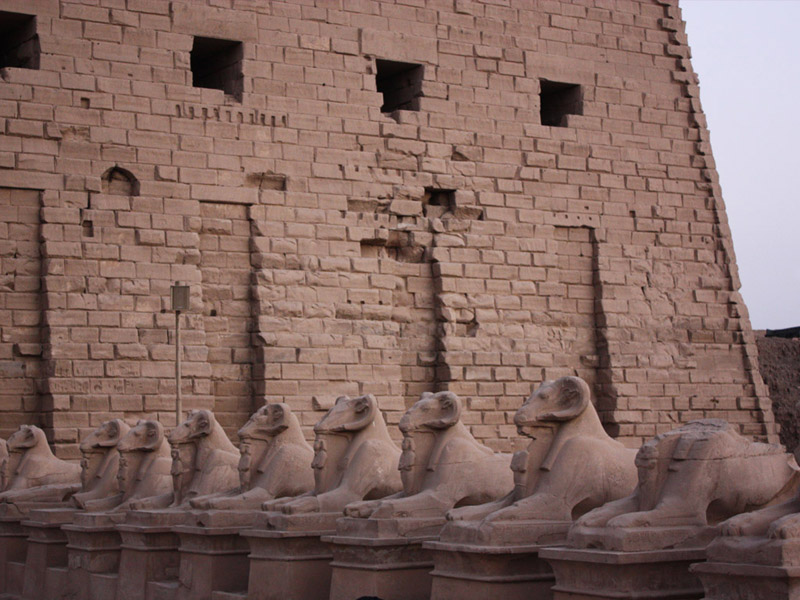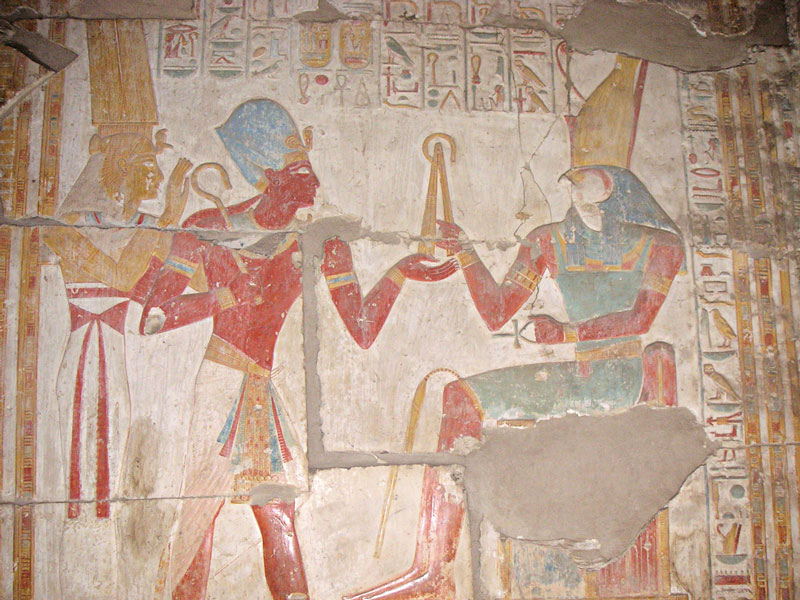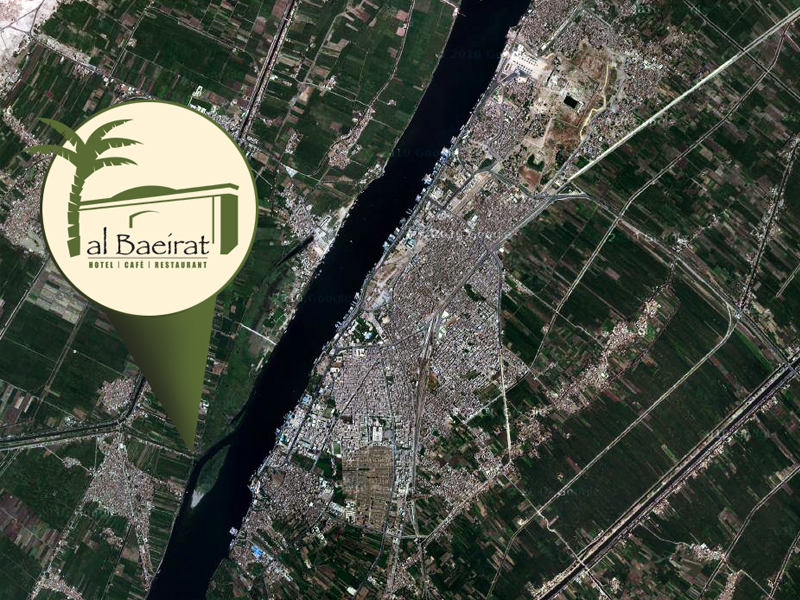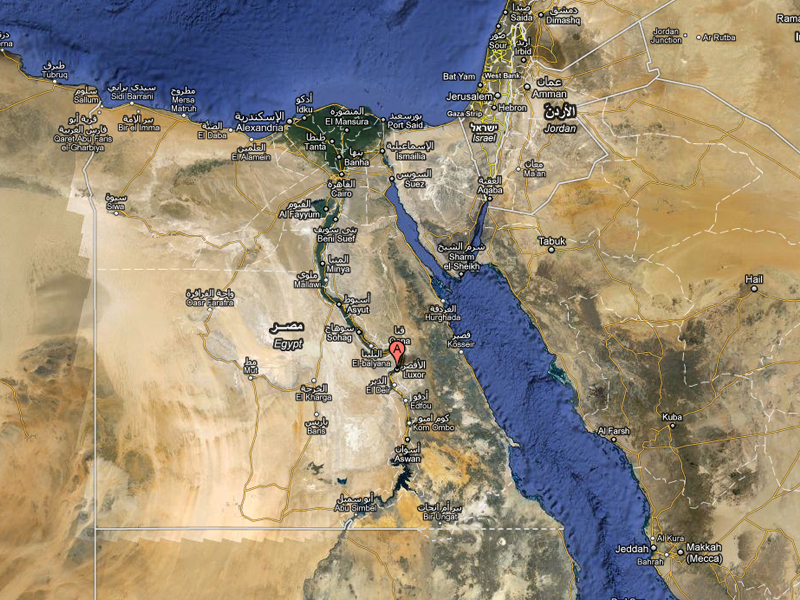Luxor
Luxor, in arabic al Uqsur, situated on the eastern shore of the Nile is one of the most important and oldest areas of tourism in Egypt. The Nile which is the lifeline of Egypt is on both shores bordered about five km wide by fertile ground. This green oasis is winding through Egypt and is replaced by the Arabic desert in the east and the Lybian desert in the north-west. Other than the repute as lifeline it is also the main artery of Egypt. Luxor is point of origin and terminus for many cruise liners to the southward located Assuan.
As early as in ancient times Thebes was because of numerous temple complexes and gravesites in the area a much sought after travel destination. This attraction to visitors to Egypt but also to the native people has lasted until today. The magnificent sight of the temple complexes of Luxor and Karnak is joined by the atmospherical view into the past, which appears while promenading through the "hallowed halls". Also the well preserved gravesites of pharaos in the Valley of the Kings, their wives in the Valley of the Queens of nobles and labourers let you dreamily travel back into history. The visit to the Luxor Museum and a stroll on the Egyptian bazaar indispensably belong to a complete impression of Luxor, as well as a cruise on the Nile on a motor-boat or a Felucca. Due to the numerous amount of cultural locations and the proximity to the international airport it is considered to be the hub of the region.
The prevailing desert climate in Luxor is distinguished with a very low atmospheric humidity and hardly any rainfall. The most pleasant temperatures are bound to be from October to April.




